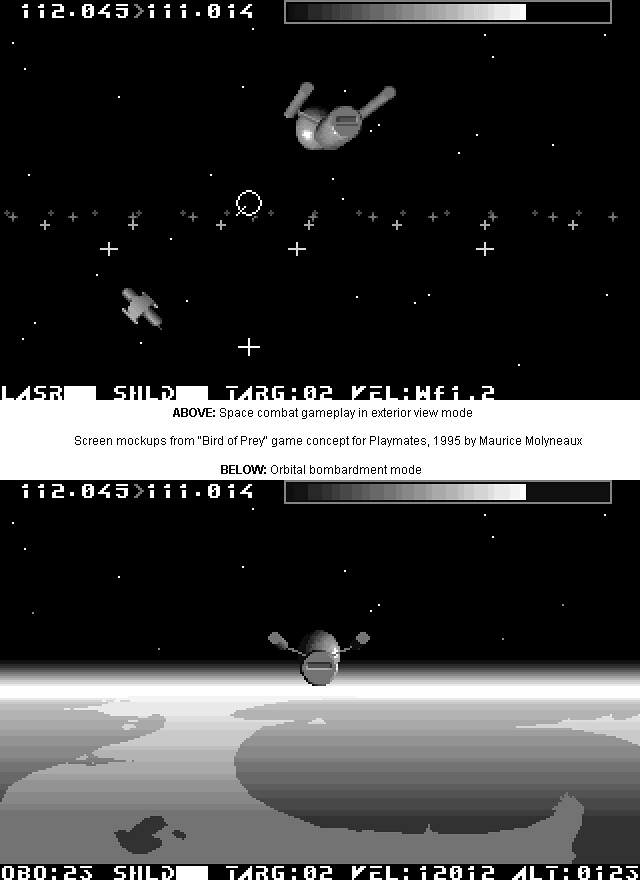-
Welcome! The TrekBBS is the number one place to chat about Star Trek with like-minded fans.
If you are not already a member then please register an account and join in the discussion!
You are using an out of date browser. It may not display this or other websites correctly.
You should upgrade or use an alternative browser.
You should upgrade or use an alternative browser.
Old Trek Game Proposal Concept Art
- Thread starter Maurice
- Start date
Thanks, guys. It's weird to get compliments on something you did half your lifetime ago! It's almost like someone else's work!
You should be proud. This game would have kicked unholy arse back then. Now, if only someone could get Secret of Vulcan Fury made...
damn you, now that's in my head, too.I saw these and the first thing that popped into my head was the Ranma 1/2 opening theme.
Arrrgh! Cross-genre contamination!
"Captain's Log, Stardate 2384.19. Spock and I are beaming down to Jusenkyo III, to investigate some springs with unusual properties..."
Pardon the necro-thread revival. I don't usually BUMP topics this old, but I just recently revived a dead hard drive and found a few more items related to the "Bird of Prey" game pitch I did for Playmates Toys/Interactive. I found the pitch document, but I also found two game screen mockups I did (in black and white), which I'm including here.

From the pitch doc:

From the pitch doc:
Combat/Flight
This is the normal game mechanic, in which the player can freely maneuver the starship through space at impulse and warp velocities. The ship can turn and propel itself in virtually any direction in pursuit of its targets.
. . .
Screen Display
Players may view the game action for one of two modes. The first "bridge" perspective, essentially simulating looking at a viewscreen. The second presents a close-up external view of the player’s ship, seen from behind and below.
[In this regard the game takes a cue from the TV series and movies, permitting external views of the player’s ship. There is considerable appeal in seeing starships in action. Showing the player's vessel on-screen will give the game a very desirable "cinematic" feel.]
Planet Orbit
In this mode the player's ship assumes a standard orbit around a planet, for purposes of docking with UESPA or allied space stations, intercepting enemy ships/satellites in planet orbit, or carrying out orbit to surface bombardment of enemy military targets. Maneuvering is restricted to the current orbital trajectory, so turning around is impossible. As per real orbital mechanics, altitude over a planet is gained and lost relative to the ship's velocity. As the ship slows, the planet's gravity gets a firmer grip and pulls the ship down into a decaying orbit (where the ship may burn up in the atmosphere). As the ship accelerates, it approaches "escape velocity" and rises away from the planet. Therefore, while low speed is desirable to make hitting surface targets easier, it endangers the ship by making it drop closer to the planet. Likewise, while high-speed makes the player's ship a more difficult target for the enemy, it also makes staying in orbit trickier.
Space is Big...TOO Big
In games from TIE Fighter to Wing Commander forward movement through space is often indicated by displaying small bits of unidentified "space debris" tumbling by the player's ship. This is illogical in the extreme, as space is just that... space. However, without such a graphic device to indicate movement, players will have no sense of actually traveling.
The solution to this problem is to treat the screen not as a real "camera view" of the action but as a tactical projection where the scale of everything has been exaggerated. A "plane" of grid points (or some similar graphical device) will appear below the player's craft, and will scroll past the ship to indicate the current direction of travel. Furthermore, tracking indicators will appear on this plane to allow players to quickly home in on targets even if they are not currently showing in the forward view.
At warp speed movement may be indicated by means of a moving starfield effect.
Last edited:
Actually, there are two games in question. The first was the "Balance of Terror" game using the movie Enterprise and then there was the "Bird of Prey" pitch from 9 years later, which those screen shots were from.Your game gets much more epic with each post about it

If anyone's really interested in seeing the "Bird of Prey" pitch I could post the whole thing as a PDF. My favorite term in the doc is the OBO for Orbital Bombardment Ordnance.

Similar threads
- Poll
- Replies
- 4
- Views
- 344
Contest: ENTER
January 2026 Art Challenge - Suggest Your Themes!
- Replies
- 2
- Views
- 258
Contest: ENTER
November 2025 Art Challenge - Suggest Your Themes!
- Replies
- 3
- Views
- 657
- Replies
- 3
- Views
- 653
If you are not already a member then please register an account and join in the discussion!



